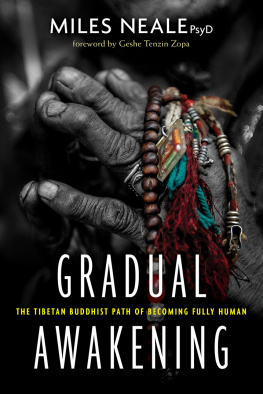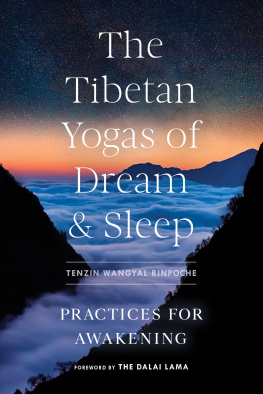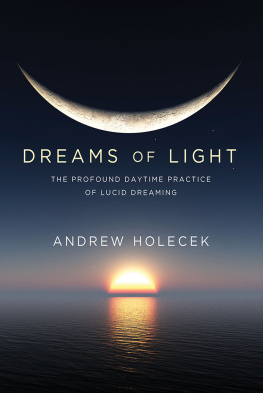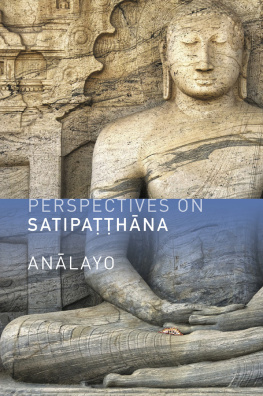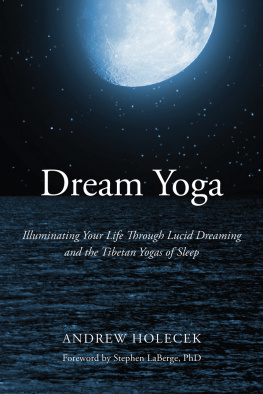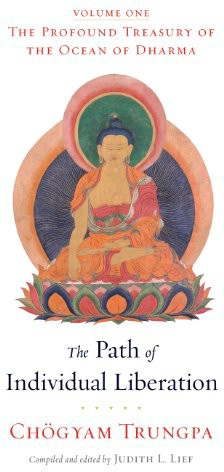
To my Jewel Tree lineage of mentors...
His Holiness the Dalai Lama
Professor Robert Thurman
Dr. Joseph Loizzo
And to my heroes, each a lamp on the path...
Acharya Godwin Samararatne
Kyabje Gelek Rinpoche
Kyabje Lama Zopa Rinpoche
Venerable Geshe Tenzin Zopa

Shakyamuni Buddha
CONTENTS
FOREWORD
A little knowledge is a dangerous thing. The great eleventh-century Nalanda pandit Lama Atisha understood this well, and with a mighty heart of wise compassion he set out to marshal the Buddhas eighty-four thousand teachingsfound in hundreds of scriptures and thousands of versesinto a logical, sequential, and practical road map to help guide spiritual seekers on the path, from ordinariness to liberation on to full and final awakening. This unique style of teaching came to be called Lam Rim, or the Gradual Path to Enlightenment, and, attesting to its beauty and effectiveness, has been preserved in all lineages and schools of Tibetan Buddhism for the past thousand years.
One of the unique features of the Lam Rim is that it recognizes an alternative to the path of sudden, spectacular enlightenment and instead proposes a more modest, gradual awakening. From the beginning of Tibets history of receiving dharma transmissions from India, with the great debates involving the eighth-century Indian scholar Kamalashila, it was clear that for the masses the gradual process of studying, contemplating, and embodying insights over the course of a sustained, lifelong practice would be most appropriate and beneficial. While all methods have their validity and are useful for practitioners of various dispositions, the gradual approach explained in these pages is as relevant to modern students as it was to Tibetans centuries ago.
According to Lama Je Tsongkhapa (13571419), the essence of the entire path to awakening can be distilled into three main realizations: renunciation, the mind that relinquishes distortions, afflictive emotions, and compulsions, as well as their unfavorable results; Bodhicitta, the mind set on awakening for the benefit of others; and wisdom, the mind that directly perceives the ultimate reality of emptiness and interdependence. This book presents those three essential realizations along with contemplation topics and meditation techniques designed to ease their integration.
Gradual Awakening is generously offered by the learned teacher and psychologist Dr. Miles Neale, who has devoted himself to scientific and Buddhist philosophical training for the past twenty years, and whose life is a living example of the Bodhisattva conduct that the Lam Rim teachings were intended to manifest in all of us. Along with sophisticated philosophical insights and complex visualization practices, I am happy to see that Dr. Neale has also presented some of the traditional Tibetan rituals, prayers, and liturgy. Rather than abandoning these cultural aspects to make the Lam Rim more accessible to the West, Dr. Neale has used neuroscience and other familiar Western psychological concepts, as well as personal stories, to reveal their deeper meaning, make them relevant to a wider audience, and ensure their vitality is preserved during the current wave of the dharmas cross-cultural transmission.
Dr. Neale and I have studied the Lam Rim from a common source and lineage that have been realized, preserved, and passed down directly from mind to mind for at least six hundred years, from the great early masters Lama Atisha and Je Tsongkhapa, to modern masters such as Pabongkhapa Dchen Nyingpo, Lama Yeshe, and Geshe Lama Konchog, all the way to our current gurus His Holiness the Dalai Lama and Kyabje Lama Zopa Rinpoche. Despite the reproducible nature of the Lam Rim teachings that have continued unbroken over the centuries, there remains room for flexibility, ingenuity, and skillful adaptation. I very much enjoy Dr. Neales fresh interpretation of the profound Lam Rim teachings that he has thoughtfully and respectfully examined through the perspectives of neuroscience and psychotherapy. Because of his long years of committed study, practice, teaching, and synthesis done with a sincere, altruistic motivation, I trust this book will reach many people who might otherwise not have had the fortune to be exposed to and to derive benefit from the dharma.
Furthermore, I am delighted with the manner in which Dr. Neale turned this book, along with its companion audio compilation of guided meditations, both published by Sounds True, into a vehicle to raise awareness and support for the nuns of Khachoe Ghakyil Ling Nunnerythe largest Tibetan Buddhist nunnery in Nepalin order that they might pursue their wish to study dharma and reach enlightenment. This is an unbelievable act of generosity, and it shows that Dr. Neale has a deep understanding of the teachings on karma, emptiness, and compassion that are at the heart of the Lam Rim. I rejoice in his meritorious activities, and I pray that this book serves you well on your gradual journey of awakening and that the dharma continues to flourish in the West.
For more than 2,500 years, wherever across the planet Buddhism has been transplanted, it has influenced and been influenced by the dominant worldviews and practices of the various cultures it has entered. This continues to be the case as Buddhism migrates West and engages with the powerful disciplines of science, medicine, and psychology. As we all know, the world is facing many challengeseconomic, sociopolitical, and environmentaland greater interfaith and interdisciplinary dialogue among different groups is critical if we are to build bridges, create harmony, deepen understanding, and collaborate to find solutions. In light of this, I am particularly pleased by the work of Dr. Neale and his colleagues at the Nalanda Institute for Contemplative Science, who are offering a bridge across time and space, between East and West, ancient and modern, spiritual and scientific, so that we might all share and receive mutual benefit from the rich cultural perspectives, techniques, and technologies of one another.
May these teachings benefit numberless sentient beings as vast as space and sow the karmic seeds of enlightenment in everyone fortunate enough to encounter them.
May all beings have happiness and the causes of happiness.
May all beings be free from suffering and the causes of suffering.
May all beings never be separated from the supreme happiness of enlightenment.
May all beings abide in equanimity, free from clinging to close ones and aversion to others.
With sincere prayers for all,
GESHE TENZIN ZOPA
Touring Geshe
Foundation for the Preservation of the Mahayana Tradition (FPMT)
Kopan Monastery, Kathmandu, Nepal
2017
INSPIRATION
STANDING ON THE SHOULDERS OF GIANTS
If I have seen further than others, it is by standing on the shoulders of giants.
SIR ISAAC NEWTON, letter to Robert Hooke, February 15, 1675
Enlightenment is possiblefor everyone. However, I dont think we will all awaken spontaneously in the way contemporary spiritual teachers Krishnamurti or Eckhart Tolle did. Most of us will never experience a voice from on high, a flash of life-altering insight, stigmata, or a transcendent miracle. Anything is possible, but the odds are not in our favor. What these teachers experienced is like winning the lottery.
Yet, from the Buddhist perspective, most of us have already won the lottery: against all probability, we have been born as human beings with intact senses and a bit of interest in pursuing something spiritual. This is even more remarkable when we consider the obstacles and temptations of our materialistic culture, in which spirit is thrown out with the bathwater of religious dogma, God is proclaimed dead, consciousness is reduced to epiphenomena of the brain, and lifes purpose is made a hedonic scramble on a treadmill to nowhere. What is far more likely than sudden enlightenment is gradual awakening. Following a systematic educational process like a college curriculum, gradual awakening builds on incremental insights into who we truly are, learning to care for ourselves and others, and discovering creative ways to engage the problems we all face. This gradual process of awakening doesnt offer an escape hatch to another realm of reality or disavow our human wounds, limits, and foibles in this realm; rather it embraces and transforms them, because
Next page
